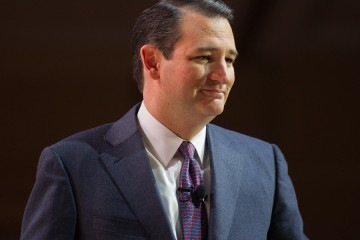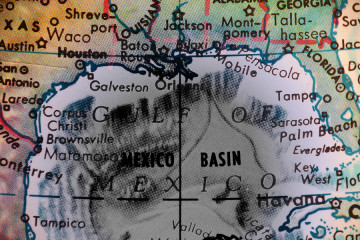Bloomberg Business: BP Labors to Cast Doubt on Gulf Spill Study It Dislikes: Energy

Copyright 2015 Bloomberg.
NL2Q3T6KLVRC
(Bloomberg) — BP Plc has apologized again and again for the 2010 Gulf of Mexico oil spill. Lately the company has been sounding less remorseful. Take a look at “The Whole Story.” It’s a web page operated by the London-based company that regularly addresses what BP calls “misinformation” about the region’s recovery and legal issues surrounding the 130 million-gallon (500 million- liter) spill, the largest in U.S. history.
BP recently spent 525 words on what it termed the “questionable science” behind a study by oceanographer Jeff Chanton addressing an abiding mystery: What happened to the crude that never washed ashore? His finding: As much as 5 percent of the oil that poured from the Macondo well settled at the bottom of the gulf, potentially damaging the ecosystem for years. The study was “problematic in many ways,” according to BP’s Whole Story page. Chanton didn’t prove sediment he sampled was directly linked to Macondo, instead of oil seeping naturally from the sea floor, according to the BP report. The website addresses a broad range of issues related to the spill. That includes research that, in many cases, BP paid for itself through an initiative it funds, but doesn’t control in any way. Access to the $500 million fund is determined solely by a separate panel of academics, appointed through discussions with the White House, Gulf state governments and BP.
Chanton’s research is among the studies paid for by that fund. A professor at Florida State University in Tallahassee, Chanton said he sticks by his methodology for the study, which was published in the peer-reviewed journal Environmental Science & Technology. The company’s response surprised him, he said. “It’s fine for (BP) to have their say,” Chanton said in an interview. “I just don’t understand why they aren’t taking credit. They’re funding all this work. Why aren’t they proud?”
Obligation to Speak
BP, meanwhile, said it has an obligation to speak out on research it doesn’t view as telling the full story. “Misinformation persists about the recovery of the Gulf,” said BP’s Geoff Morrell, senior vice president for U.S. communications & external affairs, speaking generally. “Advocacy groups cherry-pick facts and misrepresent studies to paint an incomplete and inaccurate picture. This leads to a narrow, one-sided perspective, in which studies that demonstrate that the Gulf is recovering are often overlooked.” As the five-year anniversary of the spill nears, BP is waging a public campaign to promote the idea that the gulf has largely recovered. The company’s public statements have hewed closer to the adversarial tone of litigation than the conciliatory stance the company struck immediately following the well blowout, which killed 11 men and fouled Gulf Coast beaches from Texas to Florida.
‘Sensationalizing’ Reports
On its State of the Gulf website, in speeches and on social media, BP has criticized researchers, plaintiffs’ lawyers and the media for “sensationalizing” environmental damage to the gulf. Recent targets include a study suggesting the spill hurt bottlenose dolphin populations and a research team’s admission that it may have overstated the impact on recreational fishing. At the same time, BP has touted studies suggesting brown pelicans, red snapper and killfish have held up well. The company has repeatedly mentioned the $28 billion spent so far in cleanup and other costs, and highlighted evidence that Gulf tourism remains strong. BP is making its public-relations push even as a federal judge is deciding whether to sock the company with a maximum penalty of $13.7 billion under U.S. clean-water laws. BP has argued the fine should be much lower. Jim McGrath, a partner in Houston-based strategic communications firm Begala McGrath, said BP’s responses shouldn’t surprise anyone. ’’At some point, any company would say, enough is enough, and we’re fighting back, and they’ve obviously reached that point,’’ he said
Running Tally
BP lawyers have defended the company in U.S. District Judge Carl Barbier’s New Orleans courtroom. The company’s public- relations specialists have been equally as defensive on the State of the Gulf website, including a running tally of false claims by individuals involved in “instances of fraud that have resulted in criminal charges and convictions.” The tally reached $19.9 million as of March 3.
It also offers copies of newspaper and magazine ads BP has published, as well as press releases.
“Checkbook diplomacy only goes so far,” said McGrath, who is currently a spokesman for former President George H.W. Bush. “At some point, you’re going to have to engage in the court of public opinion.” The most combative feature is The Whole Story page, where in more than 80 posts, BP has attacked research and media reports it believes overstate spill-related threats to the gulf. It started in October 2013, after the settlement negotiations with the U.S. and affected states collapsed.
‘Lost Faith’
That’s when “BP lost faith in the conciliatory approach it had been pursuing and decided to fight everything,” said David Uhlmann, a University of Michigan law professor and former chief of the U.S. Justice Department’s environmental crimes section, in an interview. Battling simultaneously on legal and public-image fronts could backfire, according to Uhlmann, who is not involved in any BP-related litigation. “BP’s public relations campaign will have no effect on the judge, except to the extent that it annoys him and leads him to conclude that BP is not accepting responsibility and should pay a larger fine.” BP’s approach bears some resemblance to Exxon Mobil Corp.’s efforts to minimize public and financial damage after the tanker Valdez dumped more than 10 million gallons of oil into Alaska’s Prince William Sound in 1989. Exxon went to the extremes of tailing a boat full of government researchers in a cruise ship and subpoenaing thousands of their records, according to the 2012 book “Private Empire” by Steve Coll. “Any legal action we took was as a consequence of the terms and conditions of the settlement with the state of Alaska and the federal government,” Exxon spokesman Alan Jeffers said.
Digital Tools
Unlike Exxon, BP now can use digital tools to question the methodology and motives of its perceived adversaries. The company’s Twitter platform for commenting has just 605 followers as of Wednesday. Exxon wound up paying about $2 billion for clean-up and agreed to about $1 billion in criminal and civil payments with the U.S. and Alaska, according to the Exxon Valdez Oil Spill Trustee Council. After adjusting for inflation and considering about $1.4 billion Exxon paid to private plaintiffs, BP is in line to pay six to eight times what Exxon shelled out. The amount of crude spilled in Macondo is estimated to be about 10 times more than that from the Valdez. To date, BP has contributed almost $2 billion to post-spill research, including about $1.3 billion to an official government study aimed at understanding its impact and another $500 million to fund studies through the Gulf of Mexico Research Initiative, including Chanton’s. BP has so far volunteered $1 billion for restoration projects.
Ecology Damage
The third phase of the trial to determine fault in the April 20, 2010, spill concluded in January. Barbier earlier found BP acted with gross negligence in causing the event, opening the company to billions in potential penalties. How many billions will hinge on how badly Barbier believes the spill damaged the gulf’s ecology and economy, as well as what BP has done to mitigate harms. All told, BP’s ultimate bill for fines, cleanup costs, pending loss claims and environmental restoration may exceed $50 billion. BP’s Morrell crystallized the thinking behind the public- relations approach in a speech to environmental journalists in October. He said “apocalyptic forecasts of the death of the Gulf, the coastal economy, indeed, the unique way of life here, did not come to pass.”
Stephanie Venn-Watson, director of the National Marine Mammal Foundation’s translational medicine and research program, said BP could have lent more context to its recent criticism of her Feb. 11 finding that there were record numbers of bottlenose dolphin strandings and deaths in a period that started three months before the oil spill, and ran through June 2013.
‘Prolonged Oiling’
The study led by Venn-Watson on behalf of the National Oceanic and Atmospheric Administration stopped short of blaming the oil spill for the deaths of hundreds of dolphins while noting that certain clusters overlapped “with locations that received heavy and prolonged oiling.”
In a Whole Story post, BP dismissed the study as repeating prior research showing the deaths had little to do with oil.“Unfortunately, large die-offs of bottlenose dolphins aren’t unusual,” BP said.
Venn-Watson said the company’s remarks, while technically accurate, were misleading. The researchers couldn’t yet prove oil caused dolphin deaths but did highlight evidence suggesting the spill contributed, she said. “It appears BP chose to talk about the limitations (of the study) and not how strong or weak they were,” said Venn-Watson. In contrast, BP highlighted a study published in the Journal of Field Ornithology’s December issue that concluded the Gulf’s brown pelican population had survived the spill fairly intact. “Multiple studies have demonstrated that any impacts to the Gulf’s bird population were limited and were followed by a strong recovery,” BP wrote.
Scott T. Walter, a Tulane University research fellow who led the pelican study, said BP’s characterization of the research was accurate, while cautioning that pelican problems could surface in coming years. With the Exxon Valdez spill, “there were long-ranging effects on birds up to nine years after the spill,” Walter said.
–With assistance from Margaret Cronin Fisk in Detroit.
To contact the reporters on this story: Bryan Gruley in Chicago at bgruley@bloomberg.net; Bradley Olson in Houston at bradleyolson@bloomberg.net To contact the editors responsible for this story: Ken Wells at kwells8@bloomberg.net Will Wade, Carlos Caminada







No Comment